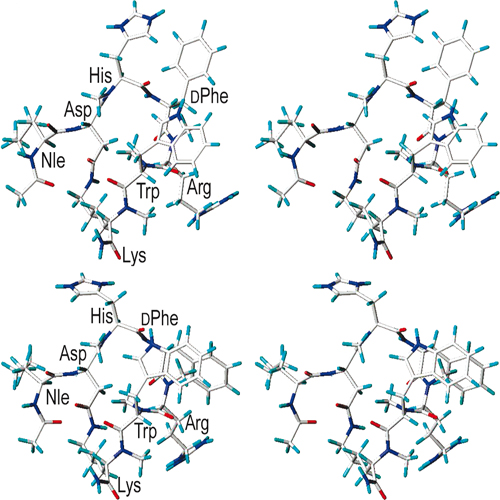Multiple N-Methylation of MT-II Backbone Amide Bonds Leads to Melanocortin Receptor Subtype hMC1R Selectivity: Pharmacological and Conformational Studies
14-May-2010
Journal of the American Chemical Society, 2010, 132, 23, 8115 - 28 published on 14.05.2010
JACS, online article
JACS, online article
Multiple N-methylation is a novel technology to improve bioavailability of peptides and increase receptor subtype selectivity. This technique has been applied here to the superpotent but nonselective cyclic peptide MT-II. A library of all possible 31 backbone N-methylated derivatives has been synthesized and tested for binding and activation at melanocortin receptor subtypes 1, 3, 4, and 5. It turned out that selectivity is improved with every introduced N-methyl group, resulting in several N-methylated selective and potent agonists for the hMC1R. The most potent of these derivatives is N-methylated on four out of five amide bonds in the cyclic structure. Its solution structure indicates a strongly preferred backbone conformation that resembles other R-MSH analogs but possesses much less flexibility and in addition distinct differences in the spatial arrangement of individual amino acid side chains.











